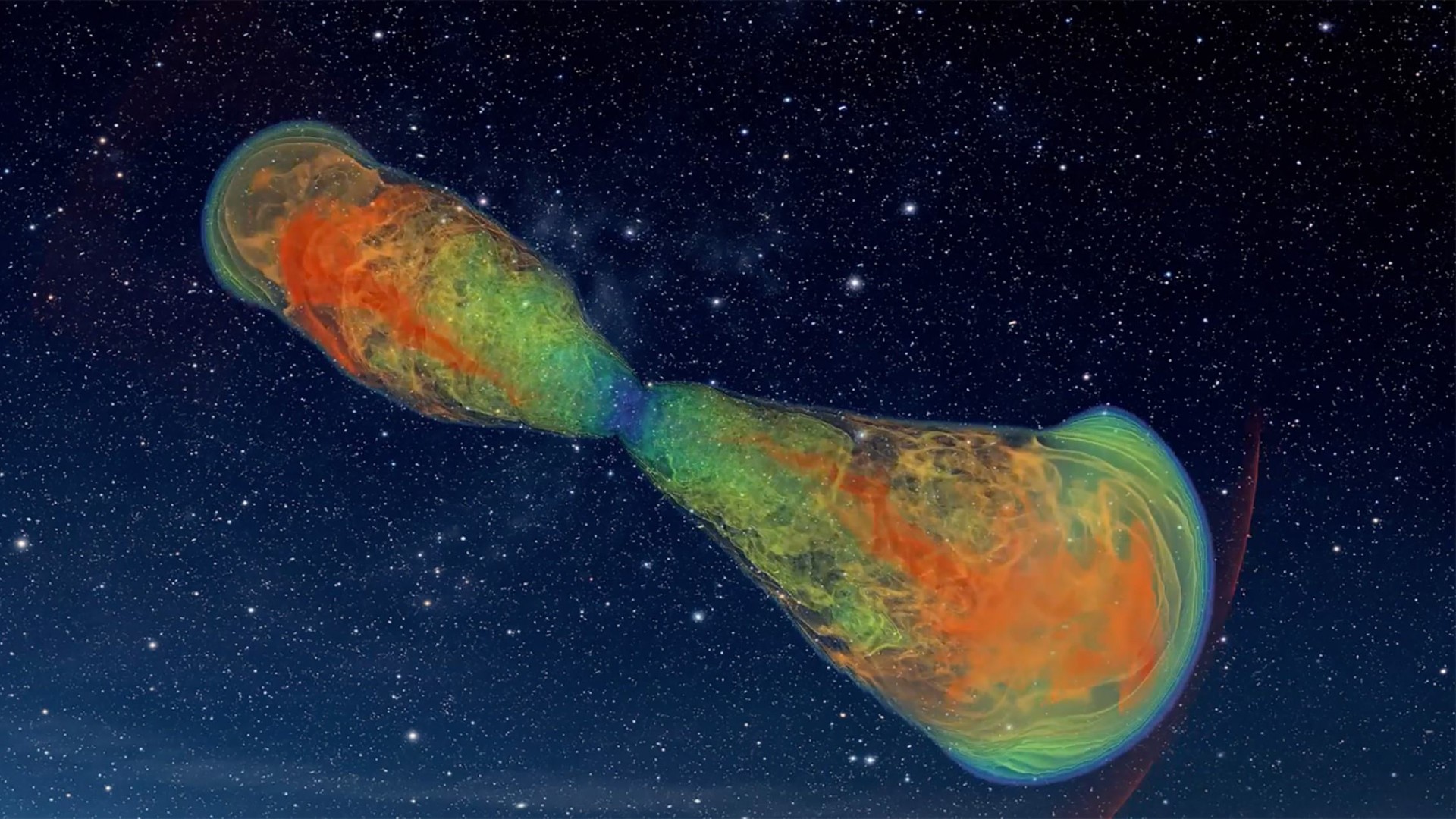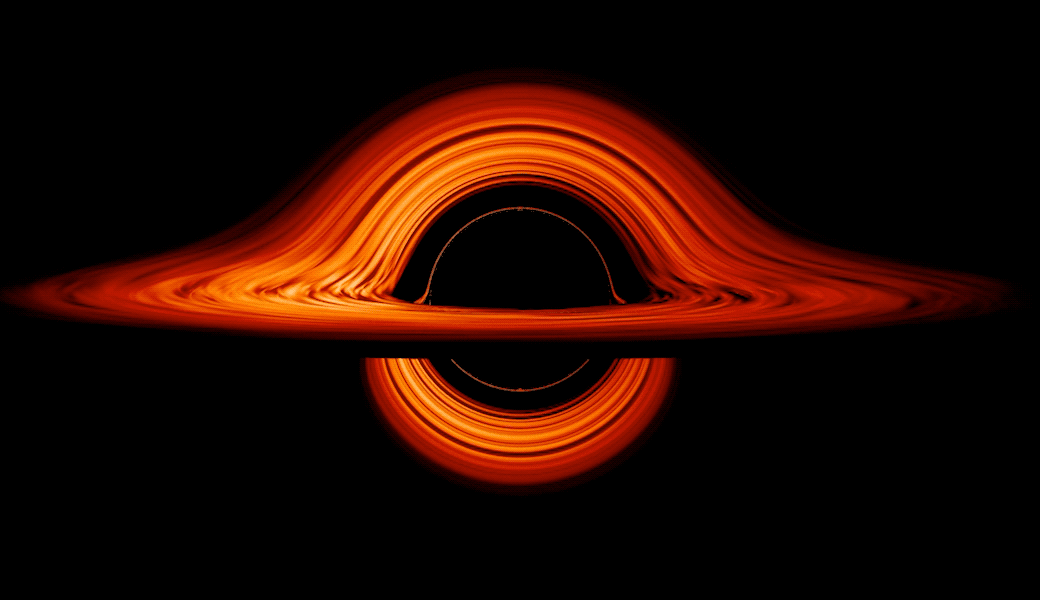Gravitational waves may come from 'cocoons' of debris around dying stars (video)
Astronomers have created the first model for how debris around exploding stars could emit gravitational waves powerful enough to be detected by instruments on Earth.
The 'cocoons' of debris that surround dying stars appear to be able to create tiny ripples in space-time.
So far, astronomers have only detected these ripples, known as gravitational waves, when they have been triggered by cataclysmic mergers of pairs of orbiting black holes, neutron stars or a combination of the two. As these very dense objects spiral toward each other in a cosmic dance that spans millions of years, they distort the fabric of space and time, sending out gravitational waves in the process.
Now, new research shows that these elusive space-time ripples are also emitted by the universe's solo members — specifically massive stars that collapse upon themselves after running out of fuel, and that those signals may even be powerful enough to be picked up by instruments on Earth.
According to a new study, when incredibly dense stars about 20 to 40 times as massive as the sun — ones that collapse to form black holes — explode at the end of their lifetimes, their stellar material forms a cloud-like "cocoon" of debris, which is "a potential source of gravitational waves that has never been investigated before," Ore Gottlieb, a theoretical high energy astrophysicist at Northwestern University who led the study, said on Monday (June 5) at the 242nd meeting of the American Astronomical Society being held in Albuquerque and online.
Related: What are gravitational waves?

While binary systems like orbiting black holes beam out gravitational waves akin to an orchestra playing harmonically, cocoons of stellar debris around exploding massive stars radiate signals that are very incoherent, Gottlieb said. The new findings could shed light on the less-studied type of such random, "stochastic" gravitational waves which are thought to be very common in the universe but extremely difficult to discern, thanks to their jumbled nature.
In the new study, Gottlieb and his team simulated the collapse of a massive star into a black hole, during which a burst of energy called a relativistic jet took shape and blasted out of the collapsing star at light-like speeds. Much like drilling a hole into a wall, "a jet starts deep inside of a star and then drills its way out to escape," Gottlieb said in a statement.
Get the Space.com Newsletter
Breaking space news, the latest updates on rocket launches, skywatching events and more!
Gottlieb's team was initially trying to see if the superheated disk of stellar material around the black hole, called an accretion disk, could produce gravitational waves. However, as the simulation continued, the outgoing jet collided with the dying star's collapsing layers of material, heating the debris and ballooning it in an hour-glass shaped structure, also called a stellar cocoon. The results from this simulation showed for the first time that such cocoons of stellar debris emit gravitational waves in detectable frequencies, according to the new study.

"To be honest, I did not look for cocoons, but the cocoons were too strong to ignore so I had to go and study [them]," Gottlieb said at the news conference on Monday. "So this was more or less by chance that I started to try to understand their gravitational wave emission."
The elusive gravitational waves emitted by stellar cocoons, whose signals astronomers say are the weakest and the most difficult to spot, originate from objects all over the universe and pass by Earth all the time, but are so random and tangled up that predicting their visit or resolving them is close to impossible. Moreover, various regions in a supernova explosion emit signals at different frequencies, making the already elusive waves much harder to detect compared to cleaner signals radiated from orbiting cosmic beasts like black holes or neutron stars.
"Nevertheless, there is lots of anticipation toward the first detection of gravitational waves not from a compact object merger, and this is something that is expected to be detected in the coming decade or so," Gottlieb said during his presentation on Monday.
Gravitational waves from stellar cocoons are thought to be promising candidates because they are the right shape — not too symmetrical, to emit strong enough signals to be detected. They also evolve quickly, which means there is a higher chance of detecting signals from them, according to Gottlieb.
The Laser Interferometer Gravitational-Wave Observatory (LIGO) detectors, which constitute the worldwide network of four massive research facilities designed to hunt for gravitational waves, haven't spotted gravitational waves from stellar cocoons yet. However, the simulations show that signals from such sources are powerful enough for LIGO to detect in its upcoming observation runs, Gottlieb said on Monday.
"As of today, LIGO has only detected gravitational waves from binary systems, but one day it will detect the first non-binary source of gravitational waves," Gottlieb said in the statement. "Cocoons are one of the first places we should look to for this type of source."
Join our Space Forums to keep talking space on the latest missions, night sky and more! And if you have a news tip, correction or comment, let us know at: community@space.com.

Sharmila Kuthunur is a Seattle-based science journalist focusing on astronomy and space exploration. Her work has also appeared in Scientific American, Astronomy and Live Science, among other publications. She has earned a master's degree in journalism from Northeastern University in Boston. Follow her on BlueSky @skuthunur.bsky.social









